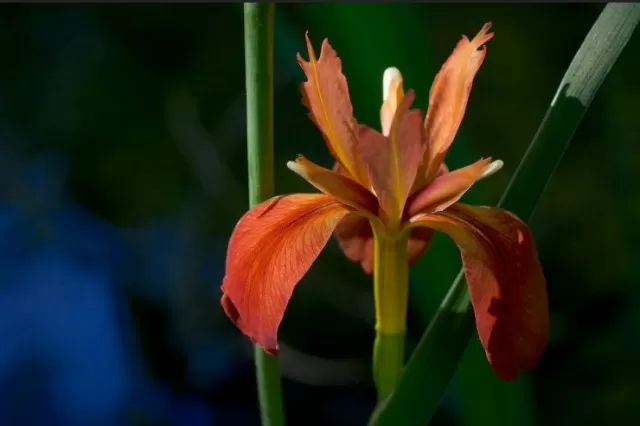10 Orange Flowers to Add Vibrancy to Your Garden (Part 1). If you love the color orange, consider adding a pop of it to your garden, where it can break up all-white beds or complement other bold brights like fuchsia and red. Orange flowers are also the ultimate yard accent: They command the eye (and serve as a focal point for a part of your landscape you want to highlight) and provide a welcome contrast to the stretch of verdant, lush lawn you work hard to maintain.
Adding orange flowers to your landscape doesn’t just have aesthetic benefits. You’ll also make a few pollinators happy in the process. Butterflies find orange among the most attractive hues in nature, according to the National Wildlife Federation. Ready to add a few of these statement bloomers to your space? Ahead, Douglas Conley, a garden coordinator with the Matthaei Botanical Gardens at the University of Michigan, and horticulturist Shannon Currey with Izel Native Plants name some of their all-time favorites.
Standing Water: A Breeding Ground for Insects

One of the most potent lures for insects, especially the notorious mosquito, is standing water.
As Jim Fredericks, a board-certified entomologist and Senior Vice President of Public Affairs at the National Pest Management Association, explains, mosquitoes are particularly drawn to areas with standing water because they use it as a prime location to lay their eggs. Astonishingly, these pesky insects can initiate their breeding process in as little as half an inch of stagnant water.
In your outdoor landscape, standing water can manifest in various forms, posing a potential breeding ground for insects.
Common culprits include empty flowerpots, pool covers, leaky hoses, forgotten buckets, baby pools, and even bird baths. To combat this insect-friendly environment, homeowners are advised to adopt a proactive approach.
Regularly inspect your property for containers that may inadvertently collect water, and promptly empty them to eliminate the possibility of providing a hospitable environment for mosquito larvae to thrive.
For those who enjoy the presence of bird baths in their gardens, it’s essential to change the water regularly.
This simple measure serves as an effective deterrent to pests, ensuring that your bird bath remains a haven for feathered friends rather than an oasis for unwanted insects.
By taking these preventative steps and mitigating standing water on your property, you not only reduce the risk of insect infestations but also contribute to a more pleasant and pest-free outdoor living environment.
Defending Against Pests: Tips for Outdoor Trash Cans
Outdoor trash cans can unwittingly become magnets for unwanted guests, including cockroaches, flies, and ants.
However, there are effective strategies to keep these pesky intruders at bay. David Price, an associate certified entomologist at Mosquito Joe, a Neighborly company, offers valuable insights on how to protect your outdoor trash cans from becoming a pest playground.
Secure Lids: One of the fundamental steps in pest prevention is to ensure that your trash cans have tight, secure lids.
Look for bins with lids that cannot be easily removed or, if the trash can is knocked over, lids that won’t readily fall off. This barrier makes it significantly more challenging for pests to access the contents and helps deter them from seeking food in your trash.
Regular Maintenance: Consistent maintenance is key to preventing pest infestations.
Routinely inspect your outdoor trash cans for any damage or wear and tear that might compromise their integrity. If you find issues with the lids or the cans themselves, repair or replace them promptly to maintain their effectiveness in keeping pests out.
Proper Placement: Position your outdoor trash cans in a location that minimizes their appeal to pests.
Avoid placing them near doors or windows, which could provide easy access to your home for insects. Instead, opt for a spot that is further from your living spaces and, if possible, away from areas frequently visited by pests.
Cleanliness Counts: Maintaining cleanliness in and around your trash cans can go a long way in deterring pests.
Rinse out containers before placing them in the trash to remove food residue, and consider using trash bags to further contain odors and debris. Additionally, periodically clean the trash cans themselves to remove any lingering odors or attractants.
By implementing these measures, you can fortify your outdoor trash cans against unwanted pests and help create a more pest-resistant environment around your home
Guiding Light: Minimizing Insects Around Outdoor Lights

Outdoor lights, while serving as beacons of illumination, can inadvertently draw in a host of flying insects due to their sensitivity to certain wavelengths of light.
According to David Price, an associate certified entomologist, outdoor lights emit light in the ultraviolet to red spectrum, which is precisely what flying insects use for activities such as foraging, navigation, and mate selection. This natural attraction makes outdoor lights a gathering point for insects.
Jim Fredericks, also a board-certified entomologist, further explains that in addition to flying insects, spiders are drawn to these congregations of insects, as they take advantage of the abundant food source attracted to the lights.
To mitigate this issue and minimize the presence of insects around outdoor lights, consider the following strategies:.
Turn Off Lights When Not Needed: The simplest solution is to turn off outdoor lights when they are not in use.
This not only conserves energy but also reduces the attractiveness of your outdoor space to insects during the night.
Motion-Activated Lights: Consider installing motion-activated lights that only illuminate when they detect movement.
This not only serves as a security feature but also reduces the overall time that lights are on and attracting insects.
Choose Warmer Bulbs: Opt for outdoor light bulbs that emit a warmer, yellower light.
These types of bulbs are less appealing to flying insects. Consider using yellow bulbs or sodium vapor lamps, as recommended by Fredericks, to make your outdoor lighting less attractive to pests.
LED Bulbs: If you prefer LED bulbs, select warmer, yellower LED lights.
Research suggests that flying insects are less attracted to LED bulbs compared to fluorescent bulbs, making them a more insect-friendly option.
By incorporating these strategies, you can strike a balance between outdoor lighting and pest control, creating a more comfortable and enjoyable outdoor environment while minimizing the attraction of insects to your lights.
Gutter Care: Preventing Pest Havens
Clogged gutters are more than just an eyesore; they can become prime real estate for a variety of pests.
These obstructed channels often hold stagnant water and accumulate yard debris, such as leaves and twigs, creating an environment that attracts and sustains insects. To combat this issue and deter unwanted guests, like mosquitoes and other pests, it’s crucial to maintain clean and clear gutters.
David Price emphasizes the importance of gutter upkeep, highlighting that keeping gutters free from obstructions is essential for pest prevention.
The conditions in clogged gutters provide an ideal habitat for insects that breed in water, like mosquitoes, or seek refuge in piles of debris.
Maintaining a Bug-Free Grill Space

When it comes to outdoor cooking, a clean grill is more than just a matter of culinary hygiene—it’s also an essential step in pest prevention.
Pests, including flies, ants, and even rodents, are naturally drawn to the aroma of food. If a grill is left dirty, with remnants of leftover food and grease, it becomes an open invitation for these unwanted visitors.
David Price emphasizes the importance of Thorough Cleaning after each use of the grill.
By removing food particles and ensuring that the grill is free from lingering odors, you can significantly reduce its attractiveness to pests. A clean grill not only provides a more sanitary cooking environment but also helps in keeping the surrounding area bug-free.
In addition to cleaning the grill, it’s crucial to ensure that it is properly covered when not in use.
A secure grill cover not only protects the appliance from the elements but also acts as a barrier to pests. When selecting a cover, opt for one that fits snugly and is not easily displaced by wind or other environmental factors.
This extra layer of protection can be a formidable deterrent to curious critters and insects.
By adopting these practices, you can enjoy your outdoor cookouts with peace of mind, knowing that your grill is not only a culinary tool but also a well-protected asset in your fight against pests.
*The information is for reference only.